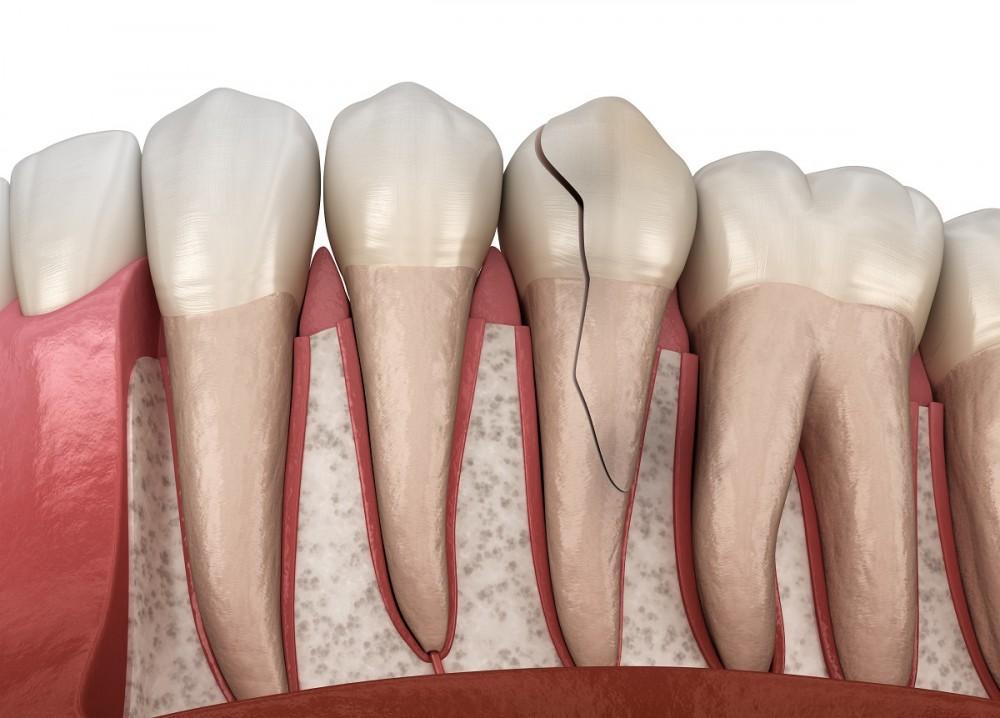Tooth enamel is tough. It’s the hardest substance in the human body, ahead of bone. But that doesn’t mean it can’t be damaged.
Your enamel can crack from the trauma of biting something hard, grinding your teeth (especially while you sleep), or because you have an overly large filling that’s stressed your tooth.
The board-certified dentists at Trident Dental in Houston, TX, are ready to help. Here, they explain everything you need to know about teeth cracks, prevention, and treatment.
Cracked teeth get on your nerves
The enamel is the top white layer of your teeth, giving them a nice white appearance. Underneath your enamel is the dentin, a hard yellow layer that protects the very inside of your tooth.
This material inside the tooth is called the pulp, where all the nerves and blood vessels live. When you damage or crack the enamel and dentin, bacteria can enter the pulp and cause an infection. The inflammation from the infection presses against the tooth nerves, making them irritated and painful.
Symptoms of a cracked tooth include:
- Intermittent pain, especially when chewing
- Sensitivity to temperature changes or sweet foods
- Swelling around the tooth.
However, sometimes cracks are symptom-free. Yet, left untreated, they could lead to long-term oral health concerns. It’s one of many reasons bi-annual checkups are essential.
Cracked teeth need treatment
The earlier you treat a cracked tooth, the more likely you’ll avoid infection and preserve your tooth. How salvageable is a cracked tooth? That largely depends on its location, severity, and the type of crack. The types of cracked teeth include:
Craze lines
Craze lines are shallow and generally don’t need any treatment. The enamel is all that’s impacted. This is the only type of crack that doesn’t require treatment.
Fractured cusp
A fractured cusp occurs when you have a large filling that eventually breaks from years of repeated pressure. Your dentist examines the tooth to determine whether your filling should be replaced or replaced with a crown. Either way, fractured cusps usually do not require extraction.
Vertical cracks
Likewise, your dentist can typically save a tooth that’s sustained a vertical crack, provided the crack does not extend below your gum line. If it does, your dentist may suggest a dental implant, crown, or root canal, allowing you to preserve your natural tooth.
Cracks extending below the gumline generally result in a tooth fully separated into two sections, requiring extraction.
Split tooth
An untreated cracked tooth may progress and develop into a split tooth. A split tooth has distinct segments that are separated by the crack. The position and severity of the crack determine whether it can be saved.
Treating your cracked tooth
If your dentist determines your cracked tooth is repairable, treatment options include:
Bonding the tooth
When a tooth has a very shallow crack, your dentist can bond it with plastic resin. Bonding seals the crack and restores the look of your tooth, allowing you to chew normally.
Adding a crown
A crown covers your cracked tooth to keep it from getting worse. Crowns are usually made of porcelain and can last for many years.
Cleaning decay with a root canal
If the crack is so deep that it’s reached the pulp inside your tooth, or if your pulp is infected, your best option is a root canal treatment. This entails making a small hole in the top of your cracked tooth, cleaning out the decay and infected material, and rinsing it clean. Then the hole is filed and capped with a crown.
Extracting the tooth
If your tooth isn’t salvageable, it will require extraction. The missing tooth can be replaced with a dental implant that looks and functions like natural teeth.
If you have symptoms that suggest a cracked tooth, schedule an appointment for anyone in the family, call the office, or book an appointment online today.

